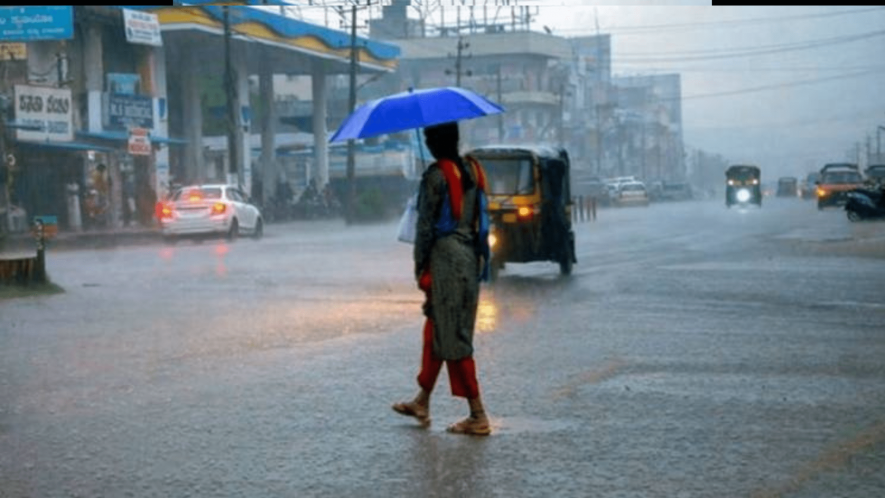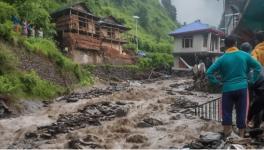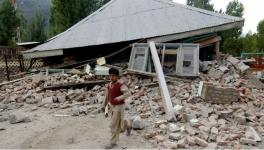Bengaluru: Where is City Climate Action Plan?

Representational Image. Image Courtesy: PTI
As Bengaluru prepares for the upcoming monsoon season, the capital city of Karnataka struggles to find a comprehensive disaster management plan. A recent survey by the students of a premier university in Bengaluru found that no such plan exists.
In a funny anecdote (during the presentation of the survey attended by this writer), students pointed out that during their regular visits to the Bengaluru Municipal Corporation-Bruhat Bengaluru Mahanagara Palike (BBMP) office, the story began with one Nagesh and ended with him. After many visits to the BBMP office, the different officials directed the students to meet officials concerned, but eventually they realised that the endpoint reached the office of Nagesh, a clerk in the disaster management office.
The emergency phone numbers and other related numbers were not operational, and one of the numbers, pointed out in the presentation, reached someone in Delhi. This is the pathetic disaster preparedness situation in a large city- an urban agglomerate- Bengaluru.
The city is disaster prone owing to various reasons. One of the reasons is the usurping of the urban commons, including its lakes and forests. Real estate has developed in waterlogged areas in the city. Bengaluru’s flooding is also related to choked stormwater drains that spill the water on the roads. Just recently, there was massive flooding in one of the regions, which led to outrage among the citizens.
Climate Action Plan along with Disaster Preparedness
Bengaluru has been without an elected council since September 10, 2020. Bureaucrats and cabals have run the city for almost three years. People’s participation is completely missing, and the city was driven by the universal model of “cities being engines of growth”. This paradigm has led to several setbacks in bottom-up planning and approach to running a city government.
The city must pull up its machinery and start seriously planning for first holding elections to the municipal corporation and then preparing a city climate action and disaster management plan.
Bengaluru must create its climate atlas, which should be done with the strong participation of the people.
Because of rapid urbanisation and geographical location, the city faces many challenges that must be addressed from the mitigation and adaptation perspective.
·Flooding: the city has seen many episodes of flooding where the people were forced to remain indoors for days together. This has happened because of faulty urban planning and massive land use changes benefiting the real estate lobby. Encroachment of lakes and improper solid waste management practices are significant reasons. The drainage system also needs a complete overhaul.
· The urban heat island effect was also witnessed in the city. This has happened because of the change in land use from open green areas to building large apartments and widening roads. Building typologies is also a significant reason for this. The push for glass typologies that do not survive even for a second without cooling further accentuates the problems.
·Air pollution is also related to vehicular emissions and industrial activities. The city’s rapid growth has led to massive congestion and increased motorised transport. Bangalore seriously needs an alternative strategy promoting public transport and coercive methods to curb single-passenger-driven cars in the city.
·Water scarcity is another issue that has been reported in the recent period. Inadequate water management practices and encroachment on water bodies are the primary reasons for such a scenario.
Alter the Process of Planning
A bunch of parastatals runs the city. For flood management, it is the Bangalore Development Authority (BDA); for managing water and sewerage, it is the Bangalore Water Supply and Sewerage Board; for planning, once again, it is the development authority that takes the call for land use.
Even while preparing a city disaster management plan, the city government must first create ward-level disaster management plans and then integrate them with the city plan.
In preparing such plans at the ward level, all the line departments and ward residents must be made to participate in this exercise. This exercise must continue for at least six months, and all the verbal and secondary data material should be registered. For example, how often a particular ward/ area has been flooded. Or, what is the evident change in the character of the ward from the infrastructure perspective, and how has it impacted the levels of pollution, water, heat, etc. all of this should be recorded and registered.
Then a city-level plan of action should be prepared, which should be a congruence of all the plans in the city. These include the city development plan, city sanitation plan, city mobility plan, city solar plan, city resilience index, etc. The city climate action plan should not be a document devoid of all these plans. It should be a culmination of all these plans.
The second important feature is adaptation. While preparing these plans, the city also needs a massive framework for building capacity building and resilient capacities of the residents. Disasters are bound to happen, owing to the current phase of development; how we adapt to them and ensure that there is a minimum loss of human lives and the assets that the people create is crucial. Particular emphasis must be laid on slums, which are more vulnerable than other spaces; children, elderly, and women.
The story of the city disaster management plan should start with people and end with people, not with Nagesh and his office!
The writer is the former deputy mayor of Shimla. Himachal Pradesh. The views are personal.
Get the latest reports & analysis with people's perspective on Protests, movements & deep analytical videos, discussions of the current affairs in your Telegram app. Subscribe to NewsClick's Telegram channel & get Real-Time updates on stories, as they get published on our website.
























